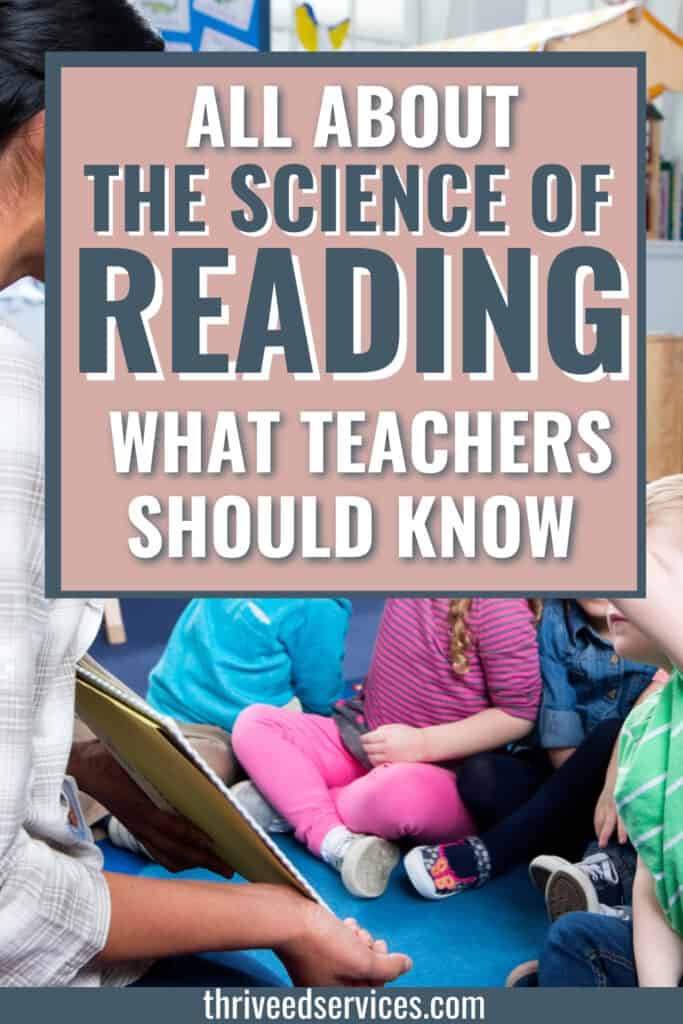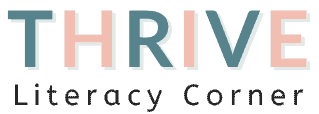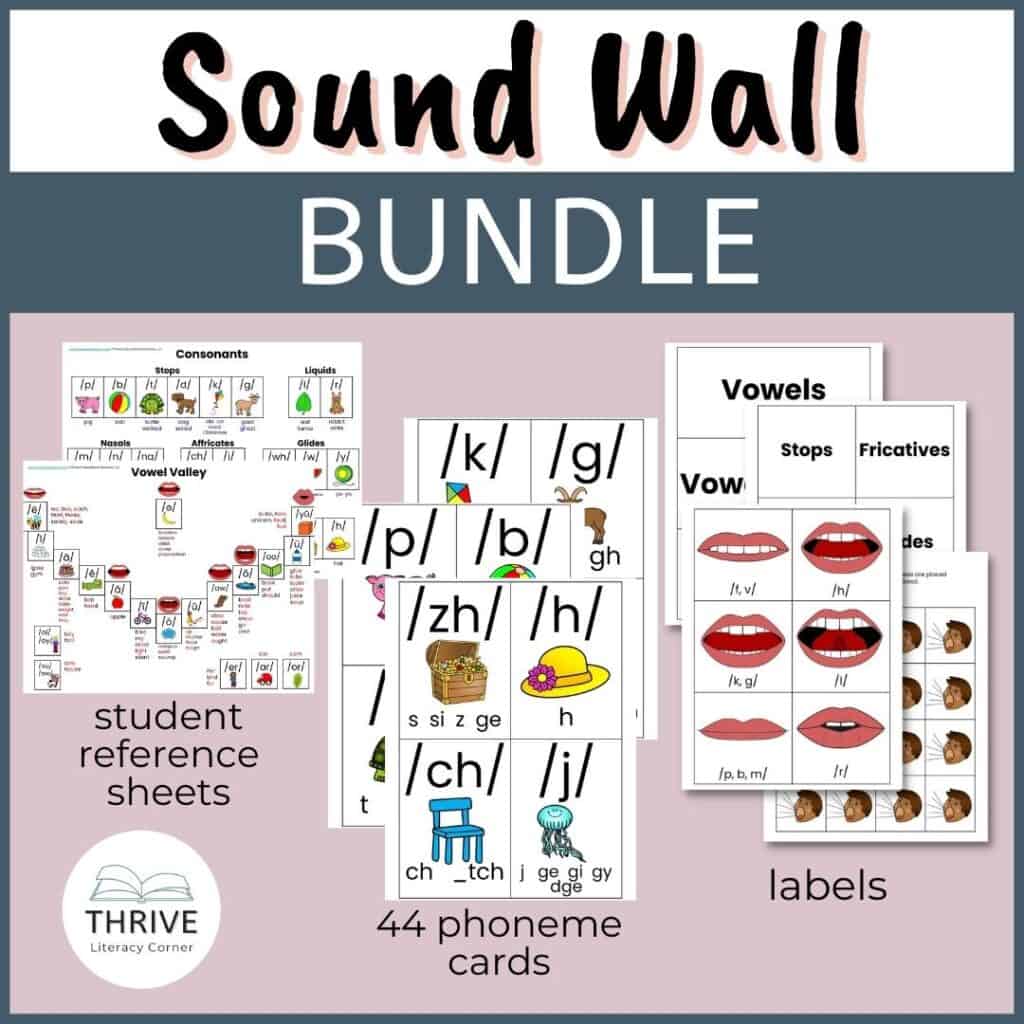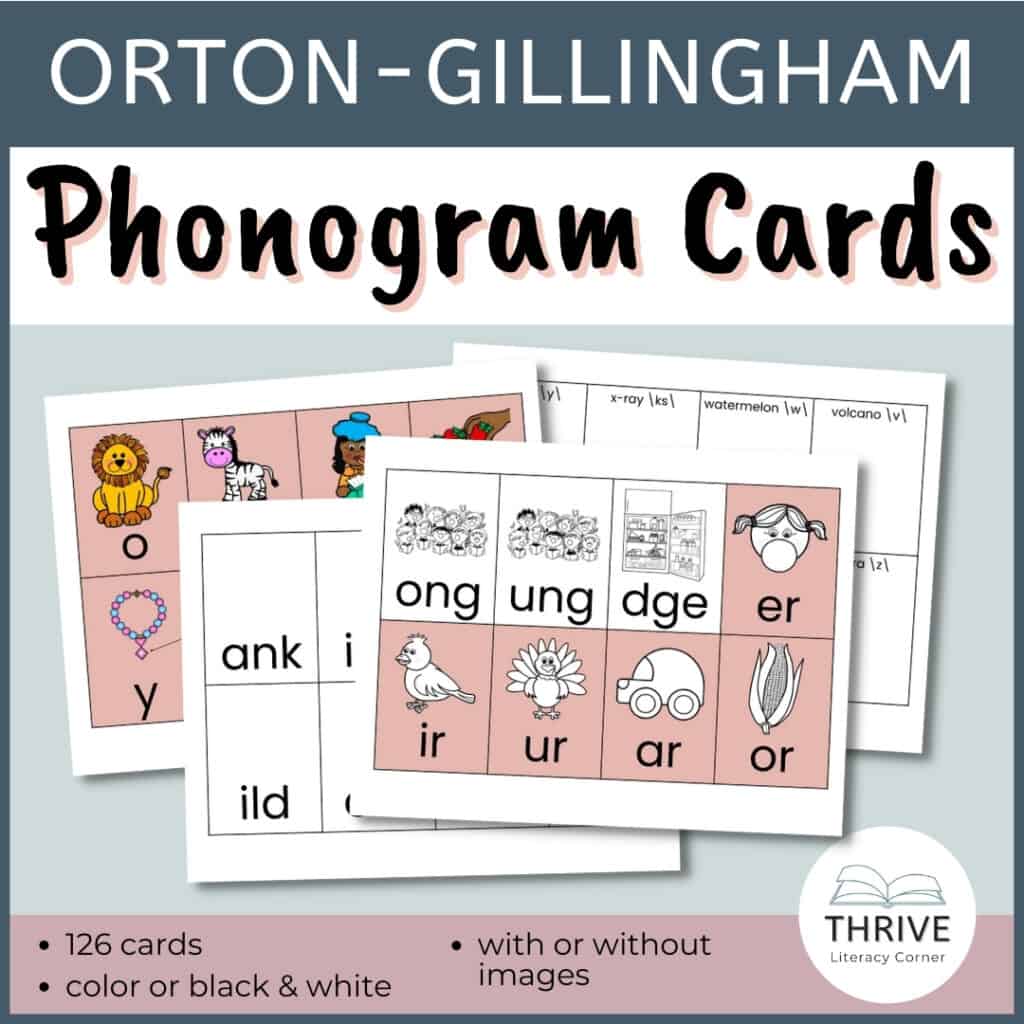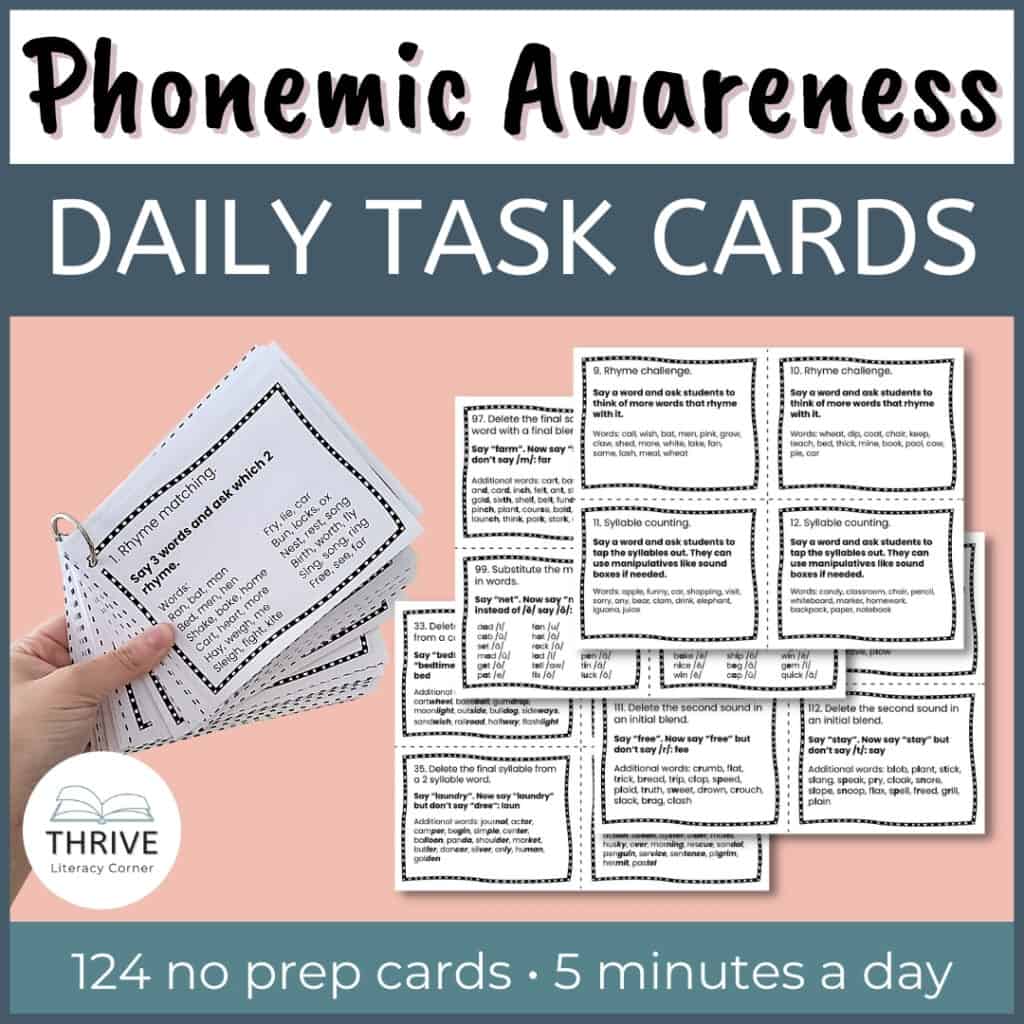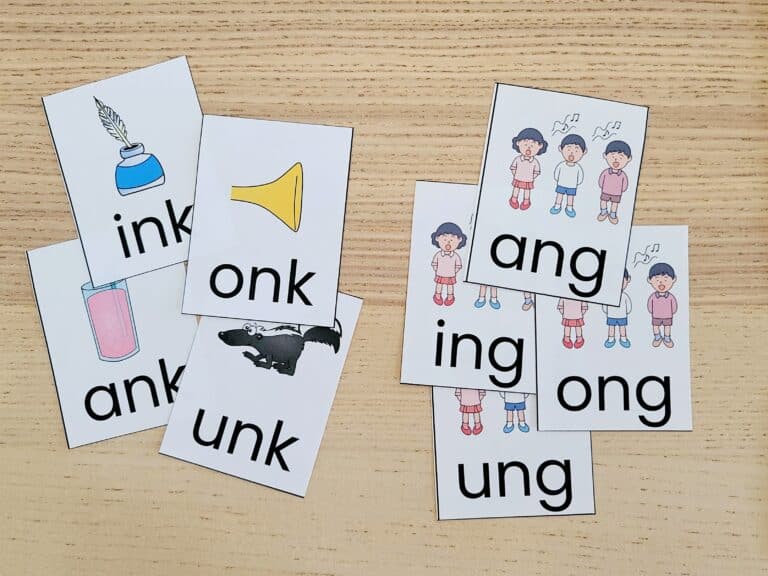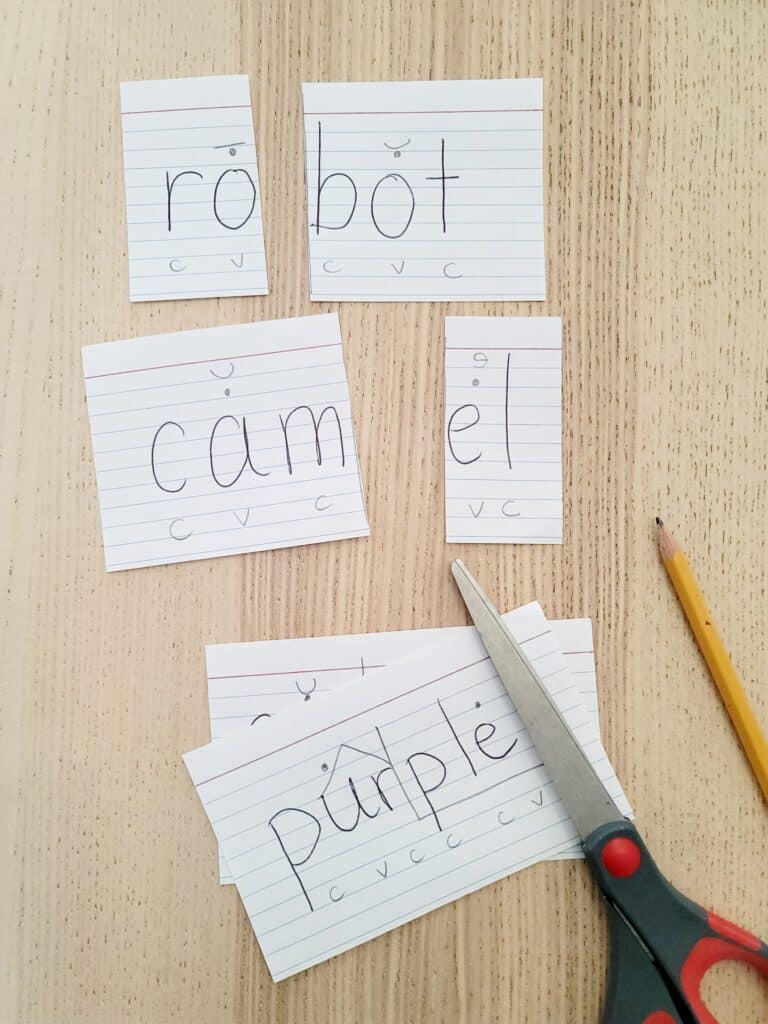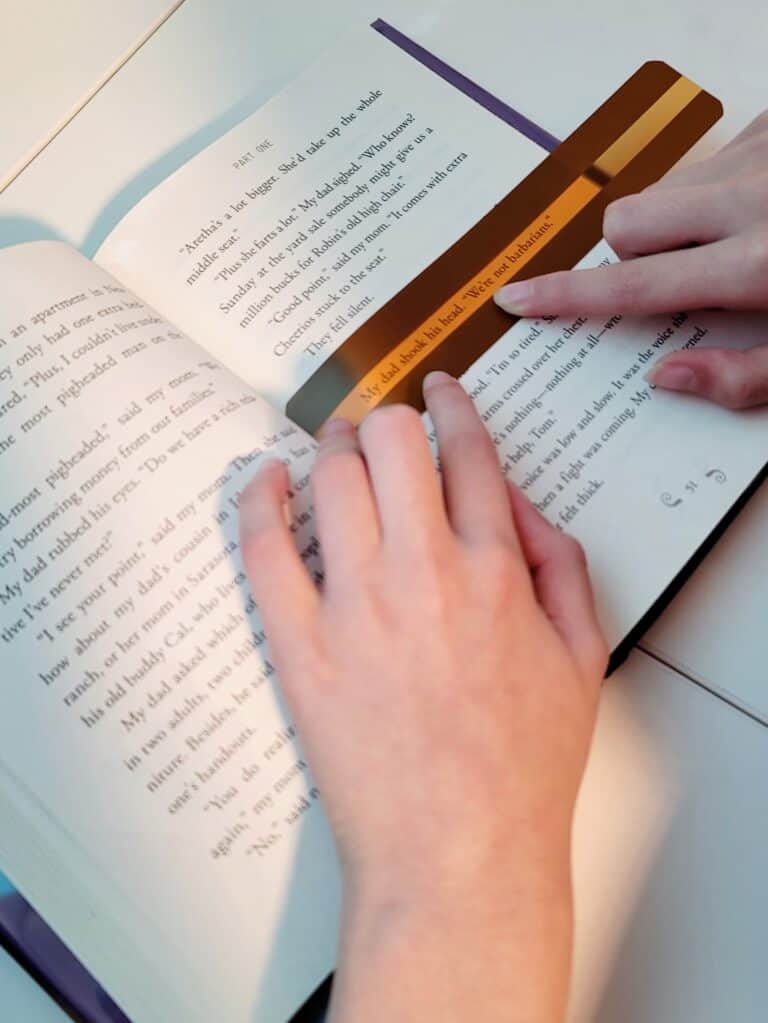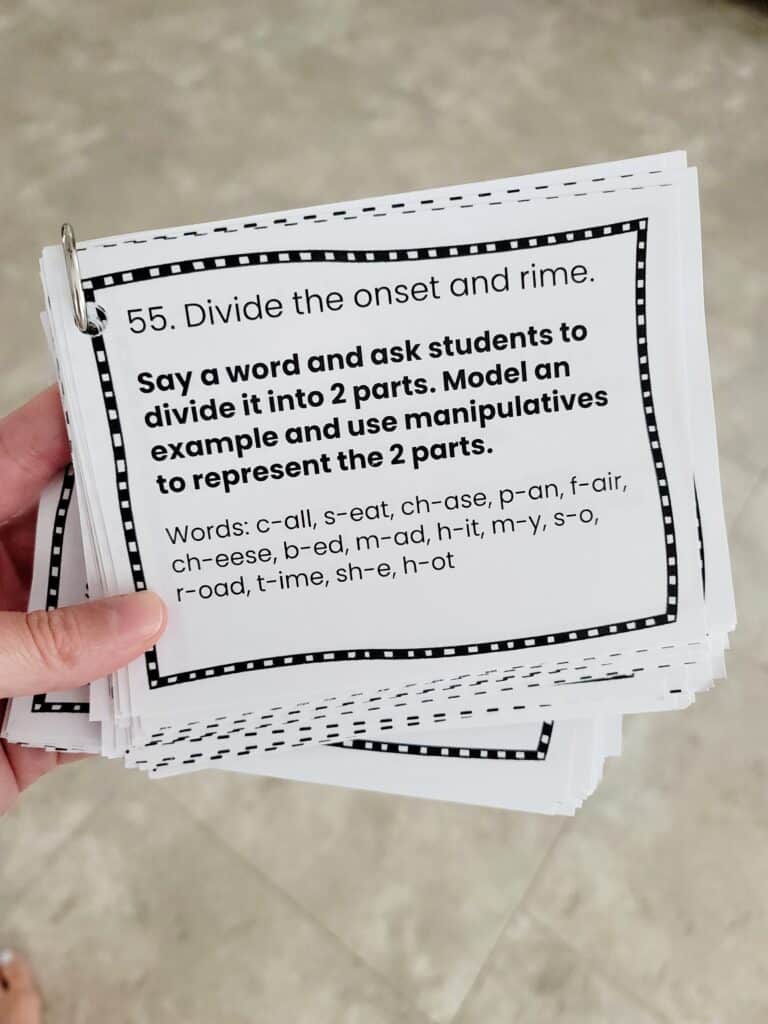What is the science of reading? FREE Quick Start Guide!
This post may contain affiliate links, and I will earn a commission if you purchase through these links. Please read the disclosure policy for more details.
The science of reading is a body of research from the last 40 years that has led to evidence-based reading instruction and recommendations for teaching reading. This research has shown that reading is not natural and needs to be explicitly taught in a systematic way for many students to become fluent readers. Read on to learn more about the science of reading and how you can improve your literacy instruction.
SCIENCE OF READING QUICK START GUIDE
Grab your FREE guide with the 5 tools you need to get started with SOR!
*Most school spam filters block my emails, so please use a personal email.

The Reading Wars
If you’ve been around reading teachers or specialists, you’ve likely heard about “the reading wars”, recently reignited by Emily Hanford’s piece At a Loss for Words, which I strongly encourage you to read.

When I was in college, balanced literacy and whole language were being taught. “Learning to read is natural” and the idea is that students are exposed to print, taught some phonics, but really focus on reading comprehension. If students have an idea of what’s going on, then they can ‘guess’ the words they can’t read. They can also memorize sight words and other tricky words.
This is exactly how I was taught to read in school too. I never thought there could be another way because I had no idea there was another way.
Fast forward to me accepting a job at a dyslexia school and receiving a ton of training – I was shocked at what I didn’t know. Most of the training I had in reading was not going to work with these students. And after learning more about the science of reading, it all made sense. Learning to read was not a natural process, and there is in fact a science to it.
What is the science of reading?
The science of reading has shown us exactly how we learn how to read, and the limitations of using the current methods of teaching reading. There is a big focus on explicit phonics instruction and phonemic manipulation, and along with language comprehension, it eventually leads to reading comprehension. If students can read and have language comprehension, then they can comprehend what they are reading. It’s that simple.
Some people believe the science of reading is just a fad and that eventually, we’ll go back to balanced literacy. But the science of reading has been around for a really long time. It’s just that it was mainly being used in special populations, like with dyslexics. Now, it’s become more mainstream and is being used more widely. And this is great because it really benefits ALL students, regardless of their abilities.
There are three areas to the science of reading: neuroscience, the simple view of reading, and the reading rope. Let’s dive in!

How We Learn To Read
I’ll keep this really basic so I don’t lose you.
We use the left side of our brain to do our reading. The back has the orthographic processor, which recognizes letters and words. The front has the phonological processor, which recognizes sounds. And in the middle back area is the phonological assembly region where we connect speech sounds with visual images – speech to print.
Scientists have found that people who are not strong readers are not using the phonological assembly region on the left side of their brain. They are doing a lot of their reading work on the right side of the brain which is not efficient.
We can actually strengthen this area by teaching kids to connect sounds to print. This involves explicit phonics instruction with lots of phonological awareness activities. Connecting speech to print is key!

The Simple View of Reading
This is a formula that defines the two basic domains that are required for reading comprehension to take place. This states that reading comprehension is a product of decoding and language comprehension.
So in addition to phonics, we need to work on vocabulary and text comprehension. Once students reach fluency, we have reading comprehension, the ultimate goal.
Think about how some students can decode words easily, but can’t answer basic comprehension questions after reading a paragraph. They may need more work on vocabulary and text structure.
How about the student who can listen to a lecture and summarize, but can’t answer questions after reading a few paragraphs on a page. This student probably needs to work on decoding, as their language comprehension is fine. They are probably struggling to read the words on the page so of course, their reading comprehension will be poor.
These students have a deficit in different areas. They cannot become fluent readers without addressing that deficit. And it’s important to find out which area they need to work on. We cannot assume a child that struggles in reading comprehension needs to work on comprehension!
I think we can all agree on everything so far. But Scarborough’s Reading Rope really helps us visualize how to get all this done.

Scarborough’s Reading Rope
Dr. Hollis Scarborough created the Reading Rope in the 90s as a visual for parents and teachers to see all that is involved in learning to read. In this image of two strands intertwining, there are two main domains for proficient reading: word recognition and language comprehension. Sounds familiar right?
She labels the strands with sub-skills for each:
Word recognition –
- phonological awareness
- decoding
- sight recognition (this is not sight words or high frequency words, but rather words one instantly recognizes because they have learned it)
Language comprehension –
- background knowledge
- vocabulary
- language structure
- verbal reasoning
- literacy knowledge
And all of these strands intertwine and lead to skilled reading, “fluent execution and coordination of word recognition and text comprehension.”
One thing Dr. Scarborough notes is that the strands get tighter as reading becomes more skilled. But if the strands get frayed, it can hold back the development of the other strands, and weaken the entire rope. So it really helps visualize the importance of each area and how these skills build and depend on each other.
So as you can see, the science of reading is not just about phonics like a lot of people think. It does indeed include comprehension. Looking at reading in this way really helps us choose more appropriate reading programs and activities for our students. It allows us to see the big picture and all the areas that need to be addressed, especially with struggling readers.
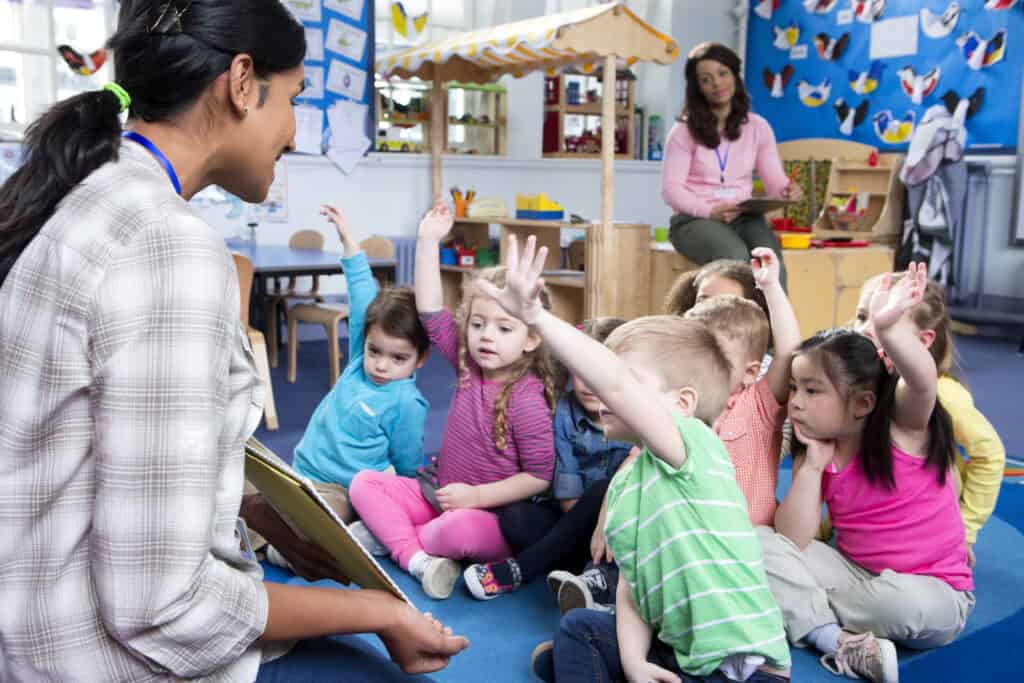
What about balanced literacy?
So balanced literacy sounds like it’s just the right thing, after all it’s balanced! But one of the big problems with balanced literacy curricula is the reliance on the three cueing system.
The three cueing system asks students to use three cues to help them identify words: 1 – meaning drawn from context or pictures, 2 – syntax, and 3 – visual (letters in the word). This often looks like teachers saying “Does that make sense?” or “Does it sound right?” or “Look at the picture.”
What we should be doing is telling students to use their phonics skills to sound out unfamiliar words.
Three cueing works great when you’re reading picture books with few words on a page that often have predictable text. But what happens when those pictures disappear and the text becomes more complicated? What cues do students use in this scenario? They can’t use the first letter as a clue for a 4 syllable word. They can’t chunk it either because it’s so long. They have to sound out the whole word, something they haven’t been taught to do. Phonics is the only thing that can help when you’re staring at a page full of letters.

Sight Words
I want to briefly talk about sight words, because this is another area where structured literacy and balanced literacy greatly differ.
According to balanced literacy, students can memorize a large number of words through repeated exposure. The problem is many students cannot memorize an endless amount of words, and many so-called “sight words” are actually decodable!
Sight words are really high frequency words. Many people believe that you can’t sound out sight words, so you have to memorize them. But that’s not true. Some words can’t be decoded following rules, but most high frequency words can.
Think about these words: and, me, we, now, they, you, very, look, have
All of those words are decodable and follow phonics rules. None of those need to be memorized.
But I was not taught that in school. I didn’t learn most phonics rules, so I never even thought about these words being decodable, and that’s probably the case for a lot of people.
If you teach the rules though, these words instantly make sense and can be decoded.
Me and we are open syllables so the e says its name. Now, they, you, and look all contain vowel teams. And is a normal word that can be decoded. Very is a two syllable word with an r combination and open syllable y. And have has a silent e after the v because of the rule that English words don’t end in v.
Structured literacy programs, which are based on the science of reading, don’t rely on memory. They teach the rules and the few tricky words are taught in a specific way so students actually learn the word and don’t simply memorize it.
The Heart Word Method is one way you can teach high frequency words that follows the science of reading.

More Science of Reading Resources
Of course, I will be writing more about this topic but I want to recommend a few other resources for you to have a better understanding of what you should be doing as a teacher/educator.
You can download my free SOR Quick Start Guide below to get 5 tools you need to start implementing techniques based on the science of reading.
SCIENCE OF READING QUICK START GUIDE
Grab your FREE guide with the 5 tools you need to get started with SOR!
*Most school spam filters block my emails, so please use a personal email.

Check out the book Shifting the Balance: 6 Ways to Bring the Science of Reading into the Balanced Literacy Classroom as the perfect starting point. It’s an amazing book that I recommend to anyone moving to a structured literacy approach or anyone who simply wants to learn more about the science of reading.
Some other great books are:
- Uncovering the Logic of English – this shows you how English actually makes sense and has rules!
- Overcoming Dyslexia
- Teaching Word Recognition
- Speech to Print – a must-have for all early elementary educators
- Equipped for Reading Success – another must-have for early reading instruction
- Reading in the Brain: The New Science of How We Read
- Proust and the Squid
- Phonics from A to Z: A Practical Guide
- Unlocking Literacy: Effective Decoding and Spelling Instruction
- Reader, Come Home: The Reading Brain in a Digital World
Helpful websites:
- The Institute of Multisensory Education Journal
- International Dyslexia Association
- The Reading League
Products:
Sources:
- The Science of Reading; Evidence for a New Era of Reading Instruction by Laura Stewart
- Early Reading Instruction: What Science Really Tells Us about How to Teach Reading by Diane McGuiness
- Reading in the Brain: The New Science of How We Read by Stanislas Dehaene
- Overcoming Dyslexia by Sally Shaywitz
- At a Loss for Words by Emily Hanford
- The Knowledge Gap: The Hidden Cause FO America’s Broken Education System – And How To Fix It by Natalie Wexler
- Speech to Print: Language Essentials for Teachers by Louisa Moats
- The three-cueing model: Down for the count? by Kerry Hempenstall
- Reading is Rocket Science by Louisa Moats
Visit my Teachers Pay Teachers shop to see all my literacy products.
Want to remember this? Save What is the science of reading? to your favorite Pinterest board!
